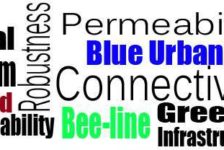Using the work and opinions of others to jump-start ideas for your portfolio (like those listed in last week’s post) is awesome, but copying someone else’s portfolio design to showcase your own work is a lousy idea if you want to be recognized for your design abilities. Your portfolio is the one place where you are the only common denominator.
I could repeat what other people have said about the principles of design, but I won’t. That information is out there for you to find, and if anyone is interested, here and here are a couple of places to start.
Having said that, how can I craft a blog post that covers portfolio design for all formats at all levels in one shot? I really can’t, and I would have to be an absolute fool to try. What I can do, however, is to begin the discussion with some design considerations that I hope will help you make decisions along the way:
- Attractive: Beauty may be in the eye of the beholder, but nobody likes an ugly portfolio. Everything matters including page layout (web and print), color, fonts, paper, proportions, and your images.
- Cohesive: The portfolio must make sense as a unit, giving a clear idea of your personal style. The best way to be memorable is to design to please yourself, understanding that whatever work you have done, it was done for someone else – your audience wants to know what you can do for them.
- Understandable: If your portfolio is too complicated, you risk losing your audience’s attention. I once had an interview with three principles. One went through my book project by project, inspecting each image carefully. The guy next to him glanced at my book while the first guy perused it, and then passed it to the third principal who had been talking to me, ignoring the book. When it was passed over to this last guy, he flipped through it in less than ten seconds while continuing the conversation. Plan your portfolio so that it will work for all three of those fellas.
- Organized: How you organize your materials says something about your thought process. Page layout and color can play a big part in visual organization, and if you use sections in your portfolio, each section should be beefy enough to stand on its own. The decision whether you should choose chronological order, project type, or some other method must depend on what you are presenting and what makes the most sense to you.
- Lead-time: This is important for two reasons: whether it will it be ready in time for you to use at your next opportunity AND to demonstrate to others (employers!) that you understand the value of time.
- Cost-effective: Send the message that you respect budgets and resources. Both are not only on the minds of employers and clients, but you also need to be aware of your own expenses as they apply to available resources. Consider how many you need to make, how much waste will be generated, and whether it is recyclable or reusable.
- Memorable: Aside from your personal style, look at all the portfolios you can and evaluate what they have in common in comparison to what you are including. For example, if everybody else has similar looking SketchUp renderings, will you do it too? Can you think of any way that your work can break out of the norm? What is it about your work and its presentation that will make someone want to turn the page or continue clicking?
- Neighbors: Don’t smash everything in without first deciding which images look the best together both on the same page and in viewing order. Start and finish strong. In general, people remember beginnings and endings better than middles.
- KISS: Keep It Simple. Make sure that the portfolio keeps focus on the work more than the portfolio itself. Too many projects can detract from the power of each individual project.
- Quality over quantity: When it comes to the question “how many?”, I’ve heard everything from “I want to see only three excellent images, that is all I need to judge someone’s work” to “Oh, twenty or so would probably be good”. Somewhere in the middle is probably about right. Again, only the best will do! When in doubt, can you leave it out?
Please add your thoughts on design in the comments and use the Portfolio and Design group on Land8 as well. I’m feeling the need for more inspiration after writing this, so in the next post, I will share some of the services, products, and other resources that might get those creative juices moving.
Published in Blog







